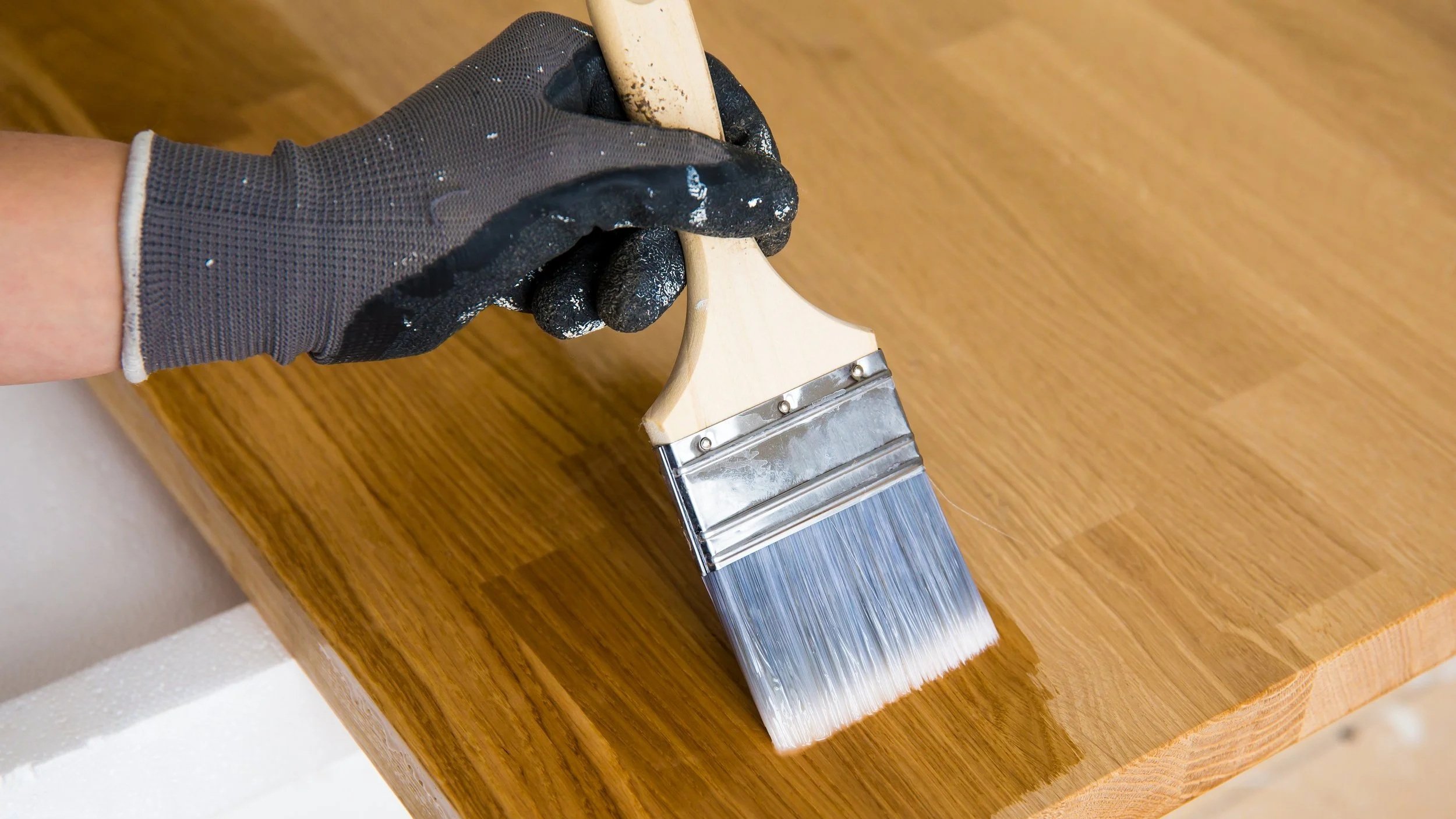Is Latex Paint Toxic to Pets?
Latex paint is one of the most commonly used paints for interior and exterior projects, known for its durability, easy cleanup, and quick drying time. It’s typically what you buy when you go to the hardware store and see products from brands like Sherwin Williams, Behr, and Benjamin Moore.
If you’re planning a painting project in your home — especially if you have children, pets, or sensitive individuals around — you may be wondering if there’s any risk of toxicity associated with your everyday acrylic latex paint.
Latex Paint is Generally Non-Toxic
Modern acrylic / latex paints are considered low in toxicity when used as directed, and many brands offer low or zero-VOC (chemicals found in paint) products. If you’re sensitive to allergens (like me), chemicals, or other potential pollutants - or just concerned in general about what’s out there on the market - you can easily educate yourself to ensure the wellbeing of everyone in your home.
What is Actually IN Acrylic / Latex Paint?
Acrylic latex paint is water-based and typically made up of several compounds:
Acrylic resins – this the binder that helps the paint adhere to surfaces
Pigments – these provide color and coverage
Additives – often added to improve flow, durability, and mildew resistance
Water – the primary solvent in most paints
Unlike older oil-based paints, latex paint contains far fewer harsh solvents and is generally safer for indoor use. Oil-based paint has its own specific applications, and acrylic latex is the most common choice for painting walls, ceilings, doors, and similar surfaces in your home.
What are Volatile Organic Compounds (VOCs)?
One of the main health considerations with any paint is volatile organic compounds (VOCs). VOCs are chemicals that evaporate into the air as paint dries. High VOC levels can cause headaches, dizziness, eye / nose / throat irritation, and exacerbate asthma or respiratory issues.
But here’s the good news…
Most modern acrylic latex paints are low-VOC or zero-VOC formulations, meaning they emit much lower levels of these harmful compounds. This makes them significantly safer for humans and pets, especially when compared to traditional oil-based paints. Brands like Clare, Sherwin Williams, and Alkemis emphasize low/no-VOC, and Alkemis in particular is the only Cradles-to-Crayons certified paint on the market.
Is Latex Paint Harmful to People?
Latex paint (when applied as directed) is generally safe for humans and animals. And whether you’re a DIY painter or hiring a pro, you’ll just want to keep a few things in mind to ensure a safe environment:
During Application: The biggest risk comes from inhaling paint fumes while painting. Even low-VOC paints can produce mild odors and cause irritation if used in a poorly ventilated space.
After Drying: Once fully dry (typically within 24–48 hours), acrylic latex paint releases very few, if any, fumes. At that point, it is generally considered non-toxic.
Ingestion: While the paint is not classified as highly toxic, ingesting it can cause nausea, vomiting, or stomach upset. This is more of a concern for young children.
Risks to Pets
Inhalation: Pets, especially birds, have more sensitive respiratory systems than humans. Strong odors and fumes can be harmful, even from low-VOC paints. Birds should always be moved to another part of the home during painting.
Ingestion: Wet paint can stick to fur or paws. If a pet licks it off, it may cause mild gastrointestinal distress.
Skin Contact: Most pets will not experience serious harm from skin contact, but it can cause irritation or fur matting.
Safety Tips for Painting Around Humans & Pets
Choose Low- or Zero-VOC Paint – These are safer and emit less odor. Brands like Clare, Sherwin Williams, and Alkemis are excellent choices for low or no-VOC formulas that also offer durability and quality.
Ventilate the Area – Open windows and use fans to speed up air circulation.
Keep Pets and Children Away – Remove them from the area during painting and drying.
Wear Protective Gear – Use a mask or respirator when working in enclosed spaces.
Store Paint Safely – Keep cans sealed and out of reach.
Final Thoughts
Acrylic and latex paints are considered low in toxicity for humans and pets when used according to manufacturer directions, especially if you choose a low- or zero-VOC formula. The main risks are during application due to fumes and the possibility of ingestion before the paint is fully dry. With proper ventilation and safety precautions, you can use acrylic latex paint in your home with minimal concern for health risks.
Questions About Paint?
Contact us to discuss your project and learn about the low-VOC and eco-friendly materials we use to protect our clients and their homes.


